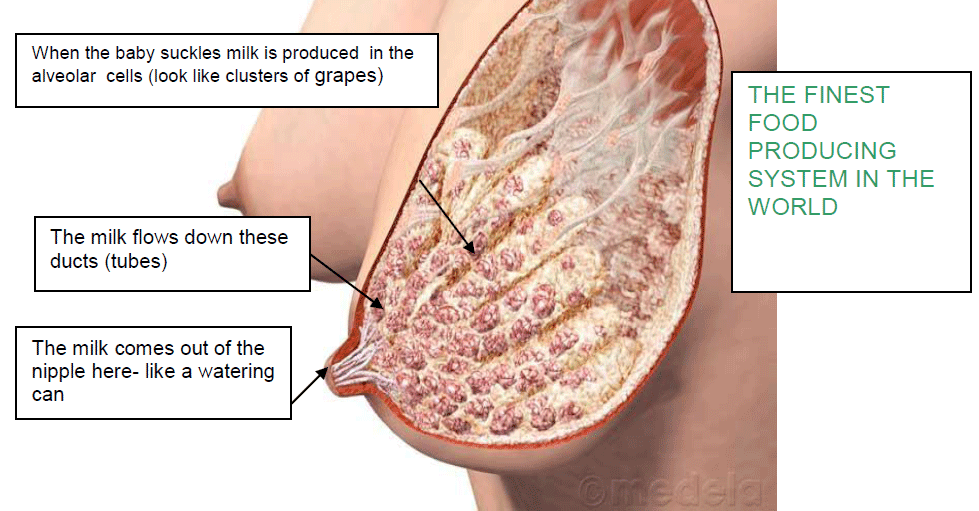 It is unlikely that anyone will start producing milk during late stage of pregnancy. Even if you do, the quantity will be very little. The first milk called colostrum will be produced after you deliver and that’s why it is essential to let your newborn suck within the first hour of delivery to stimulate production of milk. Colostrum is very rich in nutrient but low in quantity but most of the time it is sufficient for a newborn given that they are quite sleepy after birth. Some mothers are only able to collect few drops of colostrums each time but fret not, it is already a good start! Expressing and sucking of colostrums will continue for the next few days to encourage the real milk to set in after 3-5 days of delivery.
It is unlikely that anyone will start producing milk during late stage of pregnancy. Even if you do, the quantity will be very little. The first milk called colostrum will be produced after you deliver and that’s why it is essential to let your newborn suck within the first hour of delivery to stimulate production of milk. Colostrum is very rich in nutrient but low in quantity but most of the time it is sufficient for a newborn given that they are quite sleepy after birth. Some mothers are only able to collect few drops of colostrums each time but fret not, it is already a good start! Expressing and sucking of colostrums will continue for the next few days to encourage the real milk to set in after 3-5 days of delivery.
The essential theory you need to know is that the amount of milk produced (supply) will depend on the frequency in pumping or baby sucking (demand). In other words, the more you pump or allow baby to suck, the more milk your body will produce. Having said that, it doesn’t mean you should be nothing else and sit there and pump the whole day and end up like a milking cow. Over-pumping can sore breast and tits leading to unpleasant breastfeeding experience.
Amusingly, milk supply is simply like economics which you need to achieve the equilibrium; but we just aren’t talking about price but milk here. So, what you need to do to is to express every 3 hours to ensure you create optimum demand and supply. At the same time, 3 hours interval will allow your body sufficient time to fill up your milk glands all over again. Having said that, this would mean you need to express 24 hours / 3 hours interval = 8 times a day. Whew! Tiring!? Well, should you need to cheat a little; you can finish up with your last pump at 11pm and pump again at 3am and 7am. The 4 hour interval at night will allow you to steal some sleep. Then, stick to 3 hour interval at day time. To be honest, it is important to have sufficient rest, positive mindset and good food intake will allow better production in milk.
For complete guide, refer toBreastfeeding Simply by Pink McKay, Internationally Certified Lactation Consultant
Justina Wang






